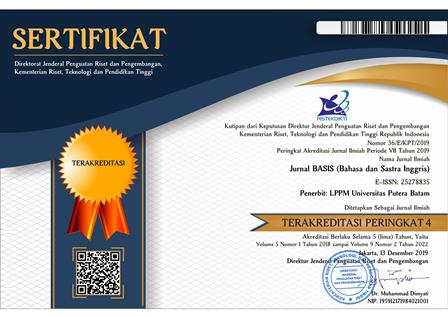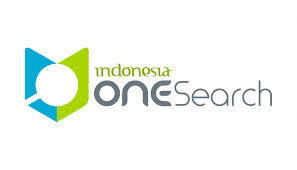INSTAGRAM: HOW DO STUDENTS VIEW ON IT IN SPEAKING CLASSROOM
DOI:
https://doi.org/10.33884/basisupb.v7i2.2435Keywords:
Learning English Speaking, Instagram, Students’ PerceptionAbstract
The emergence of the 4.0 era requires the world of education to adapt to technology. Practicing and learning English can take the advantage of the sophisticated technology, especially applications that can be downloaded from students' smart phone. Students acknowledge that English learning done in the classroom is easy for them to forget because it is rarely used in everyday life. Practices done in the classroom do not have enough time for all students to speak English, and students are less motivation to speak English outside the classroom. Integrating Instagram into the process of teaching English speaking is believed could motivate students to speak and increase their speaking ability. Various features on Instagram can help students in doing assignments. Tasks may be packaged attractively within the variety of videos based on a certain theme and uploaded to Instagram. This study aimed to determine students' perceptions related to the use of social media Instagram in learning English speaking. This descriptive study used forty-four students Communication Science in academic year 2019/2020 who took Bahasa Inggris Keahlian. To determine students' perceptions, researchers used questionnaire adopted from Dornyei, 2011. The results of the study showed a positive or good response on students' perceptions towards the use of Instagram in learning English Speaking. Furthermore, Instagram can be used as another medium in teaching speaking. This is strengthened by the increase in self-confidence, learning motivation, and student interest in speaking in English.
References
Alnathalah,A.M.(2016).Problemanddifficultiesofspeaking thatencounterEnglish languagestudentsatQudsOpenUniversity.JournalofHumanitiesand SocialScience Invention, 5(1), 96-101.Retrieved from http://www.ijhssi.org/papers/v5(12)/version-3/O5120396101.pdf
Apriyati et all. (2018). Improving students public speaking skill through Instagram. International Conference on Language, Literature, and Education (ICLLE), vol.263. Retrieved from: https://webcache.googleusercontent.com/search?q=cache:wo7OJUxnzpcJ:https://download.atlantispress.com/article/55907986.pdf+&cd=1&hl=id&ct=clnk&gl=id
Bal, E., & Bicen, H. (2017). The purpose of students’ social media use and determining their perspectives on education. Procedia Computer Science, 120, 177–181. Retrieved from: https://www.mendeley.com/catalogue/4cb9c62a-0f82-354a-acda 6819b043b81e/
Creswell, J.W. (2012). Educational research; planning, conducting, and evaluating quantitative and qualitative research (4thed.). New York, NY: Pearson.
Greenhow,C.(2011).OnlineSocialnetworksandlearning.OntheHorizon,19(1),4-12.ISSN: 1074-8121. Retrieved From:https://www.emerald.com/insight/content/doi/10.1108/10748121111107663/full/html
Handayani,F. (2016).Instagram as ateachingtool?Proceedingof thefourthInternational Seminar on EnglishLlanguage and Teaching. 978-602-74437-0-9-2014
Hirose, S. (1992). Critical thinking in community college. Retrieved from http://www.chaffey.edu/slo/cm_slo_toolbox/Core%20Competency%20-%20Critical%20Thinking/Critical%20Thinking%20in%20Community%20Colleges%20Shannon%20Hirose.pdf
Hosni, A. Samira. (2014). Speaking difficulties encountered by young EFL learners. International Journal on Studies in English Language and Literature (IJSELL),2(2), 2-30. Retrieved from: www.arcjournals.org
Kelly, R. (2015). An Exploration of Instagram to Develop ESL Learners’ Writing Proficiency.UnpublishedMaster’sDissertation.BritishCouncil:Ulster University. Retrieved from: https://englishagenda.britishcouncil.org/sites/default/files/attachments/dissertation_for_publication_ulster_university.pdf
Lenhart, A., Purcell, L., Smith, A., &Zickuhr, K. (2010).Social media and young adults. PewInternet and American Life Project. Retrievedfromhttp://www.pewinternet.org/Reports/2010/Social-Media-and-Young-Adults.aspx
Listiani,G.(2016).TheEffectivenessofInstagramWritingComparedtoTeacher-centered Writing toTeachRecountTexttoStudentsWith HighandLowMotivation(TheCaseof Eight GradeStudents inSMPKesatrian 1 Semarangin theAcademicYear of2015/2016). ELTFORUM,5(1).Retrievedfrom: https://journal.unnes.ac.id/sju/index.php/elt/article/view/9875
Littlewood,W.(1984).Foreignandsecondlanguagelearning.Cambridge:CambridgeUniversityPress
Mansor,N.,&Rahim,N.A.(2017).InstagraminESLClassroom.ManinIndia,97(20), 107-114. Retrieced from:https://www.researchgate.net/publication/321016352_INSTAGRAM_IN_ESL_CLASSROOM?enrichId=rgreq6baa14cacc82f21c78efafe9fcc5f9deXXX&enrichSource=Y292ZXJQYWdlOzMyMTAxNjM1MjtBUzo1NTk3MTc1MDExNDkxODRAMTUxMDQ1ODQ1OTIzMQ%3D%3D&el=1_x_2&_esc=publicationCoverPdf
Nasrullah, Rulli. (2015). Media Sosial :Perspektifkomunikasi, BudayadanSosioteknologi. Bandung: Rosdakarya.
Nirmawati, L. Amalia.(2015). Improving students’ speaking skills through speaking board game of grade VIII of SMP N 13 Yogyakarta in the academic year 2013/2014.Faculty of Language and Arts.Yogyakarta State University. (Unpublished thesis)
Nunan, D. (1992). Research method in language learning.Cambridge, NY: Cambridge Language Teaching Library.
Okada, Y., Sawaumi, T., & Ito, T. (2014). Different effects of sample performance observation between high and low proficiency English learners. In Aishah M. K., W. M. Chan, S. W. Chi, K. N. Chin, S. Klayklueng, S. Kumar Bhatt, M. Nagami, J. W. Sew, T. Suthiwan, & I. Walker, (Comps.), Knowledge, Skills and Competencies in Foreign Language Education. Proceedings of the 6th CLS International Conference (pp. 394– 413). Singapore: National University of Singapore, Centre for Language Studies. Retrieved from http://www.fas.nus.edu.sg/cls/CLaSIC/clasic2014/Proceedings/
Prasetyo, B., &Jannah, L. M. (2005).MetodePenelitianKuantitatif: TeoridanAplikasi.PT.RajaGrafindoPersada Published, Jakarta
Siregar & Syofian. (2014). Metode Penelitian Kuantitatif. Kencana Published, Jakarta
Sari,N.Ardila.(2017).Students’difficultiesinspeakingskillattheeleventhgradeofSMA MuhammadiyahIKarang Anyarin the academicyearof 2016/2017.(unpublished thesis). StateIslamicInstituteof Surakarta
Tarigan, H. (2013). BerbicaraSebagaiSuatuKeterampilanBerbahasa. Bandung: Angkasa.
Ur, P. (1991). A course in language teaching: Practice and theory. Cambridge: Cambridge University Press.
Wiktor,K.(2012).ABillionDollarIdea:InstagramandLanguageLearning.Retrieved from: https://bravelearning.com/2012/04/20/a-billion-dollar-idea-instagram-and-language-learning/
WorldBank.(2010).Indonesiaskillreport:Trendsinskillsdemandgap,andsupplyinIndonesia. Retrieved from http://siteresources.worldbank.org/EASTASIAPACIFICEXT/Resources/226300-1279680449418/HigherEd_IndonesiaSkillReport.pdf
Zhang, S. (2009).The role of input, interaction, and output in the development of oral fluency.English Language Teaching, 2(4), 91-100. Retrieved from: https://pdfs.semanticscholar.org/d3d3/257374693bf714c2cb8f6a311d31cc17ec12.pdf
Downloads
Published
Issue
Section
License

















